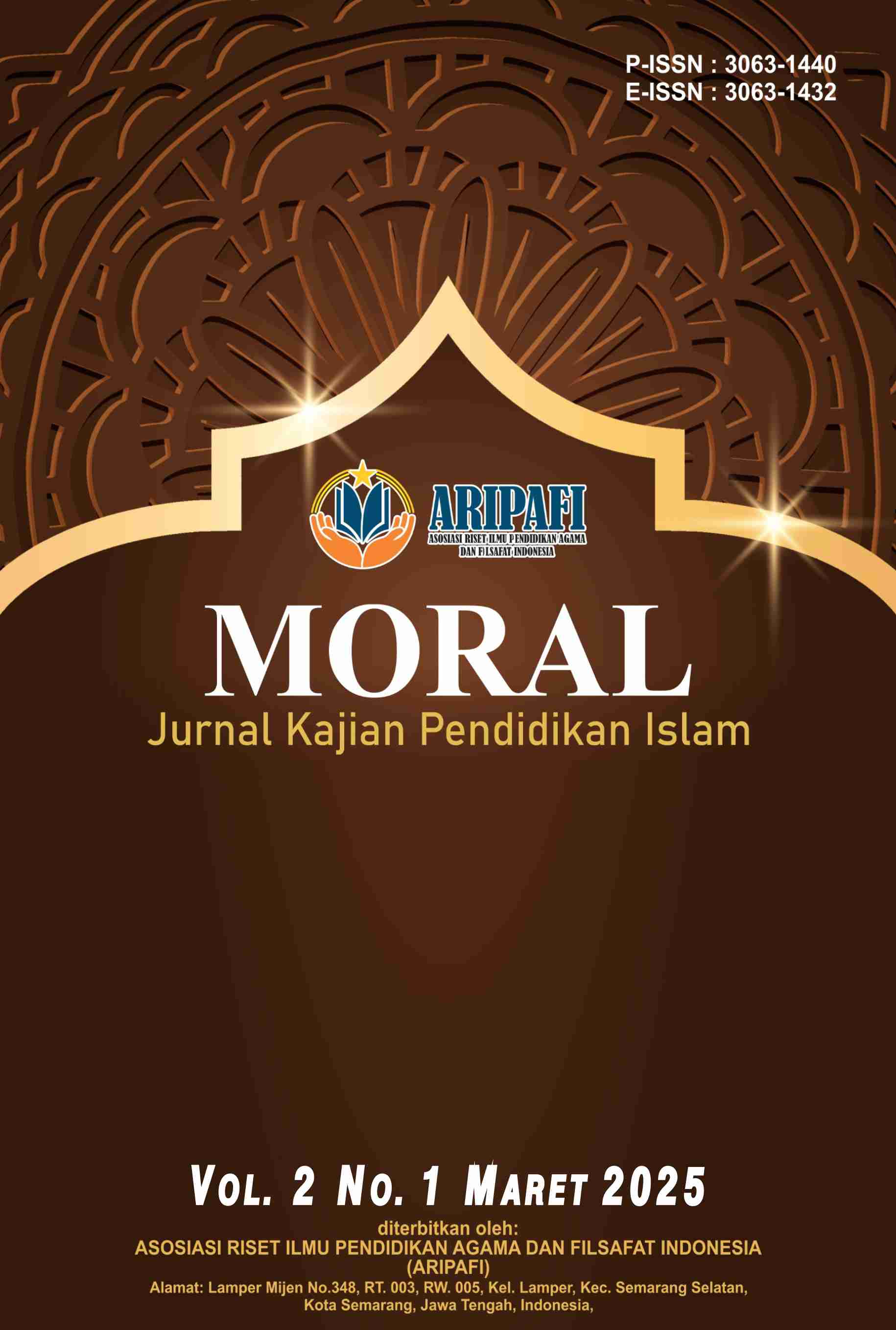Implementasi Assesmen Akidah Akhlak pada Lembaga Pendidikan Madrasah Ibtidaiyah Misbahul Adhim dalam Era Digital
DOI:
https://doi.org/10.61132/moral.v2i1.582Keywords:
Assessment of Creed and Morals, Elementary Madrasah, Digital Era, Educational TechnologyAbstract
Faith and moral education in Madrasah Ibtidaiyah (MI) plays an important role in shaping students' moral character in accordance with Islamic principles. Amidst the explosive growth of digital technology, Madrasah Ibtidaiyah Misbahul Adhim implements faith and moral assessment using various digital platforms, namely Moodle and Quizz. This study aims to explore the implementation of faith and moral assessment in the digital era at Madrasah Ibtidaiyah Misbahul Adhim, and to identify its benefits, challenges, and impacts on student learning. By applying case study methodology, qualitative approach, and data collection strategies that include document analysis, observation, and interviews, the following study found that although technology makes it easier to carry out assessments, challenges such as accessibility, content supervision, and interaction quality must still be considered. Therefore, this study suggests the need for stricter supervision of digital content and training for teachers to optimize technology in faith and moral assessments.
References
Ahmadi, F., Kom, S., Kom, M., & Ibda, H. (2021). Desain pendidikan dan teknologi pembelajaran daring di era revolusi industri 4.0 dan Society 5.0. Qahar Publisher.
Al-Azawei, A., Baiee, W., & Mohammed, M. (2019). Learners’ experience towards e-assessment tools: A comparative study on virtual reality and Moodle quiz. International Journal of Emerging Technologies in Learning (iJET, 14), 34–50. https://doi.org/10.3991/ijet.v14i05.9998
Alruwais, N. (2018). Advantages and challenges of using e-assessment. International Journal of Information and Education Technology, 8, 34–37. https://doi.org/10.18178/ijiet.2018.8.1.1008
Andriani, A. D., Awaludin, R., Muzaki, I. A., Pajarianto, H., Himawan, I. S., Latif, I. N. A., Nugroho, R. S., & Imaduddin, M. (2022). Pendidikan agama Islam di era disrupsi. TOHAR Media.
Asrial, A., Karea, S., Kurniawan, D., Perdana, R., & Sandra, R. (2023). E-assessment: Character of students in elementary school. International Journal of Interactive Mobile Technologies (iJIM, 17), 117–142. https://doi.org/10.3991/ijim.v17i05.34205
Astalini, A., Kurniawan, D., Sulistiyo, U., Perdana, R., & Susbiyanto, S. (2019). E-assessment motivation in physics subjects for senior high school. International Association of Online Engineering, 4–15. https://www.learntechlib.org/p/218047/
Bahar, M., & Asil, M. (2018). Attitude towards e-assessment: Influence of gender, computer usage, and level of education. Open Learning: The Journal of Open, Distance and e-Learning, 33(3), 221–237. https://doi.org/10.1080/02680513.2018.1503529
Bearman, M., Nieminen, J. H., & Ajjawi, R. (2023). Designing assessment in a digital world: An organising framework. Assessment & Evaluation in Higher Education, 48(3), 291–304. https://doi.org/10.1080/02602938.2022.2069674
Bhuiyan, A., & Islam, A. (2023). E-assessment during COVID-19 pandemic at a Saudi university: Impact on assessment methods and course learning outcomes. https://doi.org/10.22541/au.168261123.37361530/v1
Chaiyo, Y., & Nokham, R. (2017). The effect of Kahoot, Quizizz and Google Forms on the student’s perception in the classrooms response system. 2017 International Conference on Digital Arts, Media and Technology (ICDAMT), 178–182. https://doi.org/10.1109/ICDAMT.2017.7904957
Chaparro-Peláez, J., Iglesias-Pradas, S., Rodríguez-Sedano, F. J., & Acquila-Natale, E. (2020). Extraction, processing and visualization of peer assessment data in Moodle. Applied Sciences, 10(1), Article 1. https://doi.org/10.3390/app10010163
Chen, L.-L., & Chin-Mu, C. (2023). Formative e-assessment design in online learning environments. International Journal of Education, 15, 36. https://doi.org/10.5296/ije.v15i1.20580
Chirumamilla, A., Sindre, G., & Nguyen-Duc, A. (2020). Cheating in e-exams and paper exams: The perceptions of engineering students and teachers in Norway. Assessment & Evaluation in Higher Education, 45(7), 940–957.
Chirwa, M. (2018). Access and use of internet in teaching and learning at two selected teachers’ colleges in Tanzania. International Journal of Education and Development Using ICT, 14(2).
Damayanti, N. A., & Dewi, R. M. (2021). Pengembangan aplikasi Kahoot sebagai media evaluasi hasil belajar siswa. EDUKATIF: Jurnal Ilmu Pendidikan, 3(4), Article 4. https://doi.org/10.31004/edukatif.v3i4.656
Daryanes, F., & Ririen, D. (2020). Efektivitas penggunaan aplikasi Kahoot sebagai alat evaluasi pada mahasiswa. Journal of Natural Science and Integration, 3(2), Article 2. https://doi.org/10.24014/jnsi.v3i2.9283
DENGAN APLIKASI KUIS ONLINE QUIZIZZ. Prosiding Sesiomadika, 2(1a), Article 1a. https://journal.unsika.ac.id/index.php/sesiomadika/article/view/2249
Faisal, F., Imtihana, A., & Wasilah, W. (2023). elatihan pemanfaatan teknologi informasi komunikasi bagi guru PAI di SD Negeri Sugiraya-Musi Banyuasin. Jurnal Sistem Informasi dan Ilmu Komputer, 1(2), 87–99.
Downloads
Published
How to Cite
Issue
Section
License
Copyright (c) 2024 Moral : Jurnal kajian Pendidikan Islam

This work is licensed under a Creative Commons Attribution-ShareAlike 4.0 International License.






